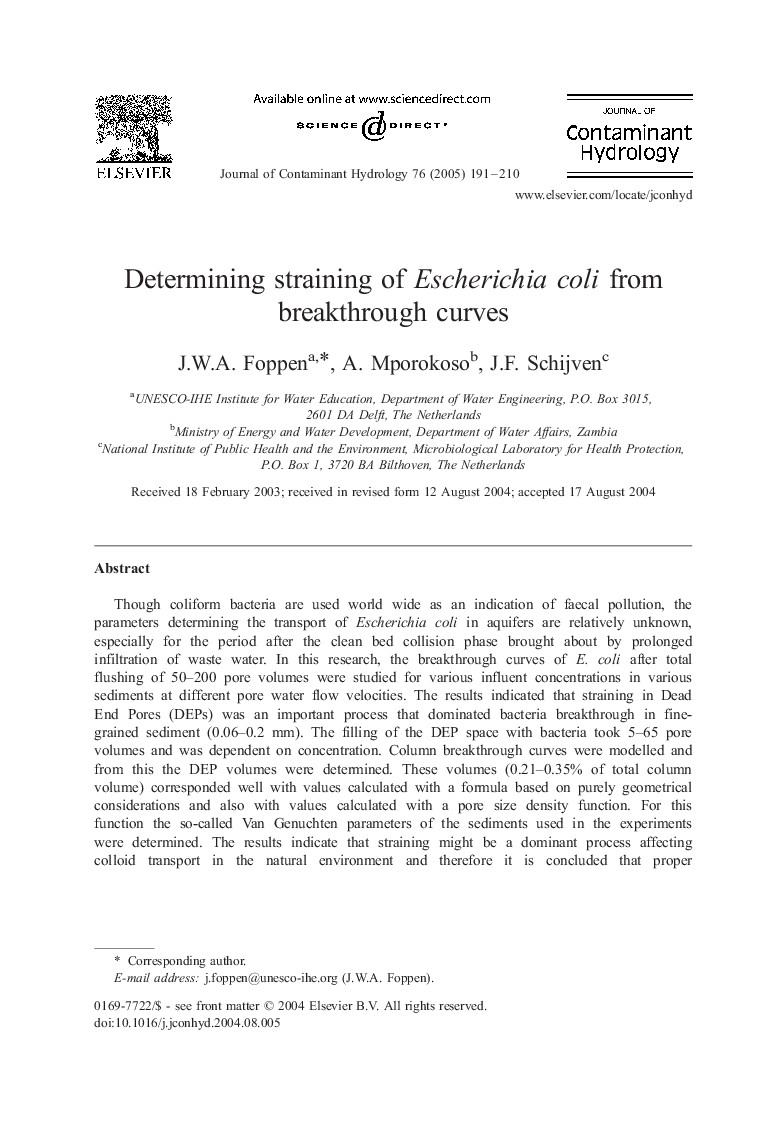| Article ID | Journal | Published Year | Pages | File Type |
|---|---|---|---|---|
| 9482967 | Journal of Contaminant Hydrology | 2005 | 20 Pages |
Abstract
Though coliform bacteria are used world wide as an indication of faecal pollution, the parameters determining the transport of Escherichia coli in aquifers are relatively unknown, especially for the period after the clean bed collision phase brought about by prolonged infiltration of waste water. In this research, the breakthrough curves of E. coli after total flushing of 50-200 pore volumes were studied for various influent concentrations in various sediments at different pore water flow velocities. The results indicated that straining in Dead End Pores (DEPs) was an important process that dominated bacteria breakthrough in fine-grained sediment (0.06-0.2 mm). The filling of the DEP space with bacteria took 5-65 pore volumes and was dependent on concentration. Column breakthrough curves were modelled and from this the DEP volumes were determined. These volumes (0.21-0.35% of total column volume) corresponded well with values calculated with a formula based on purely geometrical considerations and also with values calculated with a pore size density function. For this function the so-called Van Genuchten parameters of the sediments used in the experiments were determined. The results indicate that straining might be a dominant process affecting colloid transport in the natural environment and therefore it is concluded that proper knowledge of the pore size distribution is crucial to an understanding of the retention of bacteria.
Keywords
Related Topics
Physical Sciences and Engineering
Earth and Planetary Sciences
Earth-Surface Processes
Authors
J.W.A. Foppen, A. Mporokoso, J.F. Schijven,
